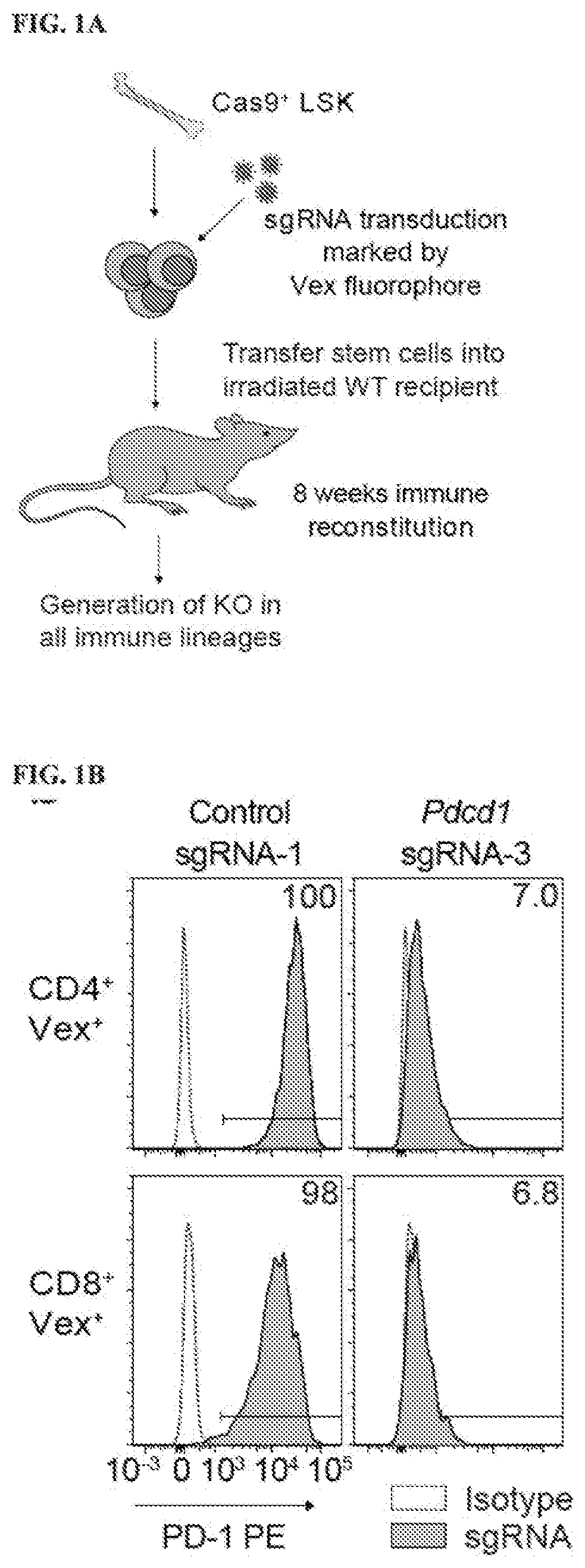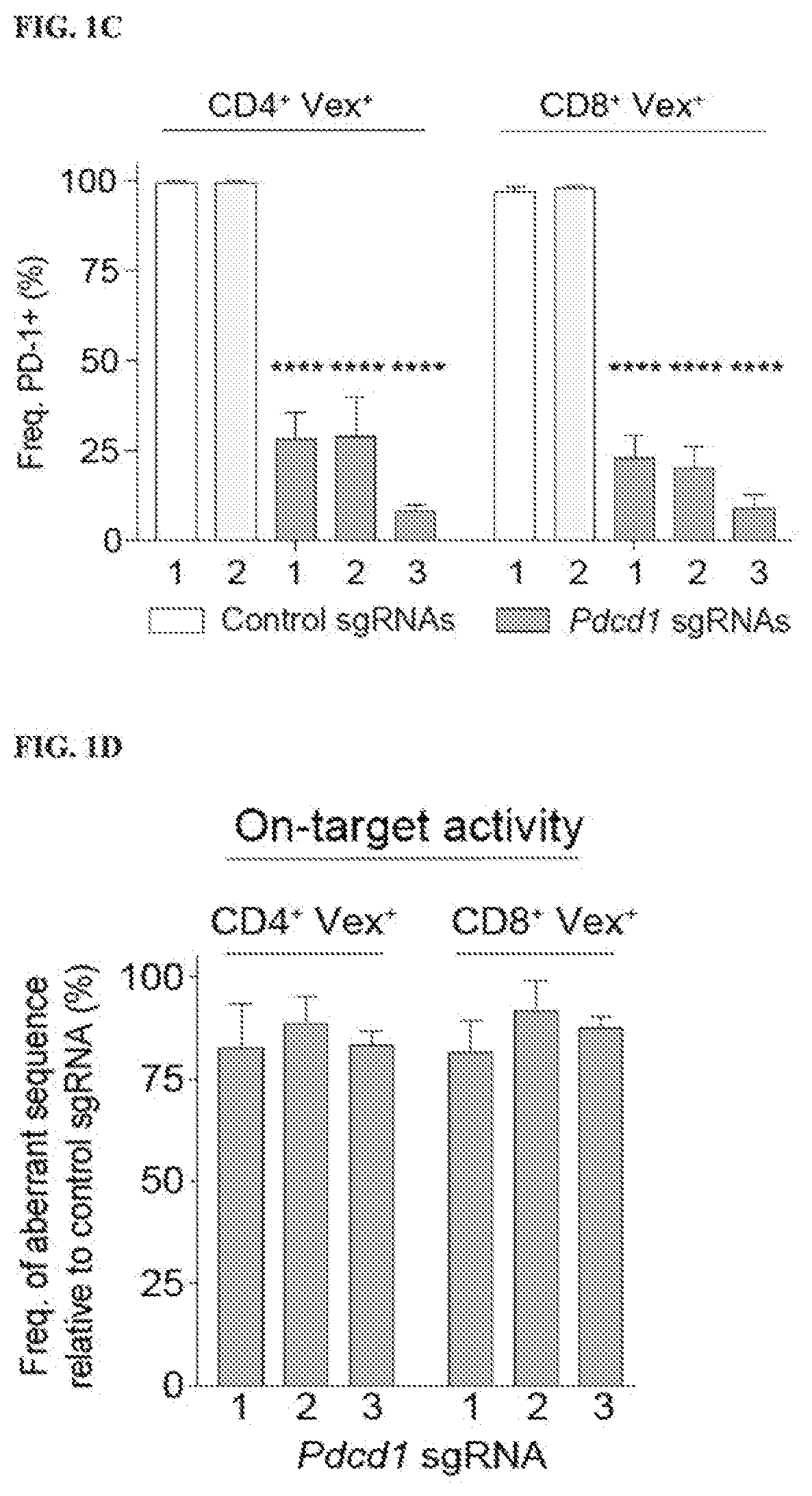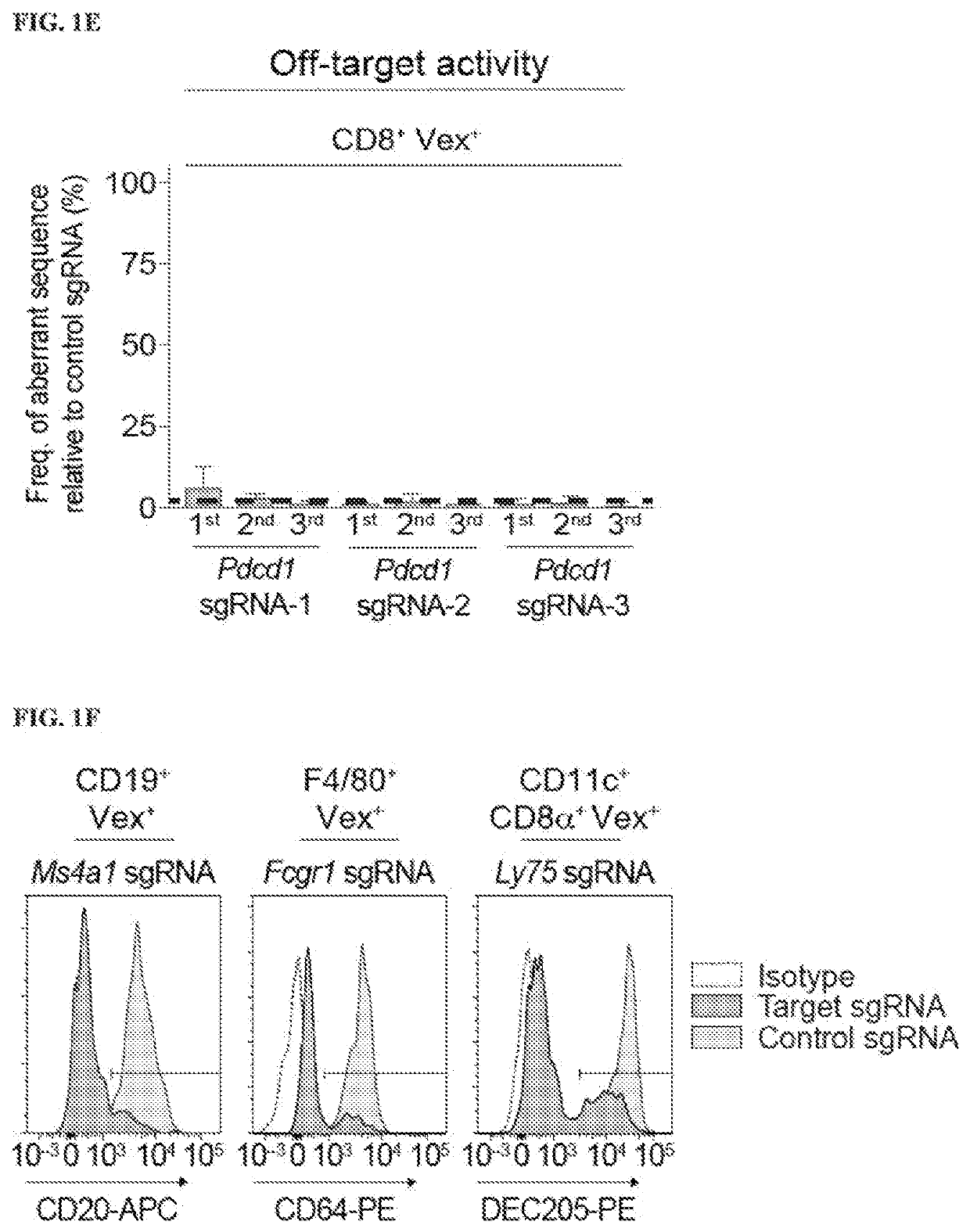Modulating ptpn2 to increase immune responses and perturbing gene expression in hematopoietic stem cell lineages
- Summary
- Abstract
- Description
- Claims
- Application Information
AI Technical Summary
Benefits of technology
Problems solved by technology
Method used
Image
Examples
example 1
and Methods for Examples 2-12
[0642]a. Mouse Breeding and Production
[0643]Seven to 10-week-old female or male mice were used for all experiments and 7 to 14-week-old female or male mice were used as donors for bone marrow chimera experiments. Wild-type (WT) C57BL / 6 mice were purchased from The Jackson Laboratory. LoxP-STOP-LoxP Cas9 mice (B6J.129(B6N)-Gt(ROSA) 26Sortm1(CAG-cas9*,−EGFP)Fezh / J) were a generous gift from Dr. Feng Zhang, Massachusetts Institute of Technology (Platt et al. (2014) Cell 159:440-455). These mice were bred to Zp3-Cre mice (C57BL / 6-Tg(Zp3-cre)1Gwh / J) to delete the loxP-STOP-LoxP in the female germline. The resulting Cas9-expressing strain was then bred to OT-1 (C57BL / 6-Tg(TcraTcrb)1100Mjb / J) or P14 (Taconic B6.Cg-Tcratm1Mom Tg(TcrLCMV)327Sdz backcrossed 10 generations to Jackson C57BL / 6J) TCR transgenic mice on the CD45.1 (B6.SJL-Ptprca Pepcb / BoyJ) congenic background. All strains used were backcrossed at least 10 generations to Jackson C57BL / 6J. The sample si...
example 2
Genes are Efficiently Deleted in the Hematopoietic System
[0688]Therapies that target the function of immune cells have significant clinical efficacy, particularly in cancer, where immunotherapy with checkpoint blockade has become a mainstay of treatment. Although functional genomics has accelerated therapeutic target discovery in cancer, its use as a discovery tool in primary immune cells is limited because vector delivery to many immune cell types is inefficient and perturbs their cell state, potentially obscuring important phenotypes. To create gene deletions in hematopoietic lineages, a chimeric guide RNA delivery system was developed using bone marrow from Cas9-expressing mice (FIG. 1A) (Platt et al. (2014) Cell 159:440-455). To do this, Cas9-expressing Lineage− Sca-1+ c-Kit+ (LSK) cells were isolated from donor mice (FIG. 2A) and the LSK cells were transduced with a lentiviral sgRNA expression vector containing a Vex (violet-excited GFP) fluorescent reporter, and transferred to...
example 3
sgRNA Delivery System does not Alter Immune Development
[0691]To determine if the presence of Cas9 protein, the lentiviral sgRNA vector, or the process of transducing hematopoietic stem cells affected the development of immune cells, chimeric mice were generated using either non-transduced WT LSK cells or Cas9-expressing LSKs that were transduced with a lentiviral sgRNA vector containing a non-targeting sgRNA. The stem cells were transduced at an multiplicity of infection (MOI) such that approximately half of the immune cells expressed the fluorescent reporter, Vex, indicating the presence of the sgRNA vector (FIG. 3B). This MOI was chosen to have a sufficient quantity of transduced cells for analysis, while avoiding multiple integrations. Chimeras were analyzed after immune reconstitution, and it was found that the percentages of B cells, CD4+ or CD8+ T cells, CD11b+ myeloid cells, or dendritic cells in the spleen were similar in WT and Cas9+non-targeting sgRNA chimeras (FIG. 1H). T...
PUM
| Property | Measurement | Unit |
|---|---|---|
| Fraction | aaaaa | aaaaa |
| Fraction | aaaaa | aaaaa |
| Size | aaaaa | aaaaa |
Abstract
Description
Claims
Application Information
 Login to View More
Login to View More - R&D
- Intellectual Property
- Life Sciences
- Materials
- Tech Scout
- Unparalleled Data Quality
- Higher Quality Content
- 60% Fewer Hallucinations
Browse by: Latest US Patents, China's latest patents, Technical Efficacy Thesaurus, Application Domain, Technology Topic, Popular Technical Reports.
© 2025 PatSnap. All rights reserved.Legal|Privacy policy|Modern Slavery Act Transparency Statement|Sitemap|About US| Contact US: help@patsnap.com



